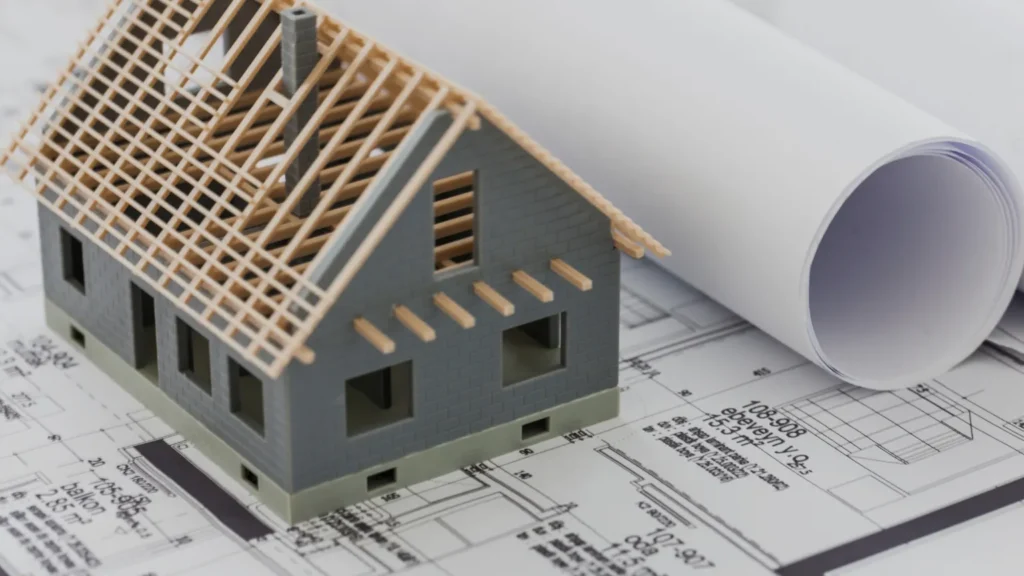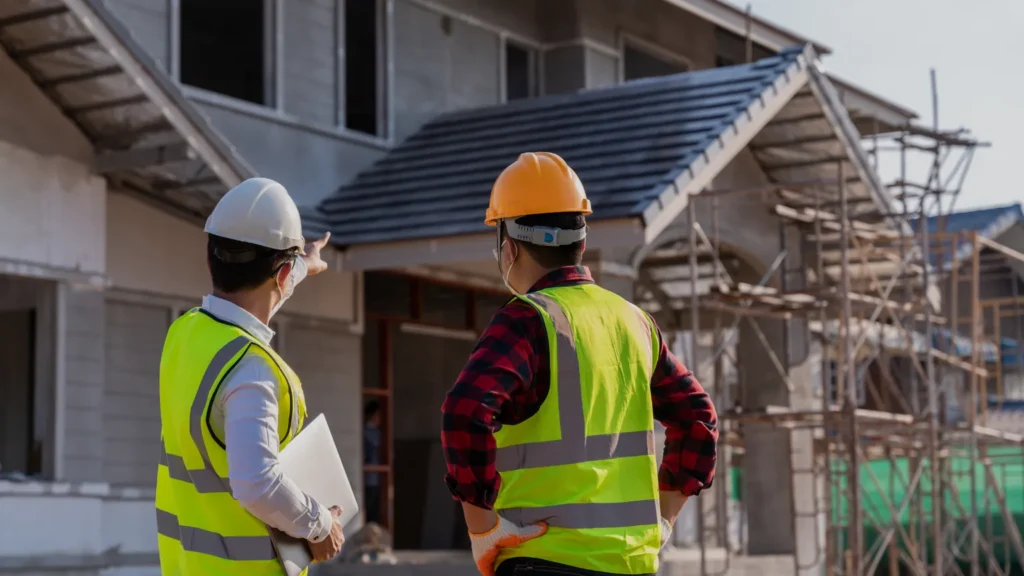Steps to Buying a House in California
Buying a house in the state of California is a massive but stimulating investment since California is such an exciting and very competitive real estate market. The fact that median home prices are looming at around $840,000, buying a house is undoubtedly full-fledged when it comes to financial investment. The demand for homes is so high, and the supply is so scarce in cities like San Francisco, Los Angeles, and San Diego that houses are sold mostly above the asking price, mainly in desirable neighbourhoods. An added challenge to securing a home purchase is the current mortgage interest rate, ranging between 6.5% and 7.2%, as ruled by the Federal Reserve.
However, if you want to purchase or even start constructing, it would be wise to engage with Estimation companies in California to get a more accurate estimate of the cost of building your new house or knowing the price of an existing property. They can help you assess property prices, taxes, closing costs, and even potential renovation expenses so you’re financially prepared.
For those looking to find more affordable options, emerging markets in Central Valley could offer more reasonable alternatives. This guide will step you through an easy process. Insights and solutions have been included to assist you in your goal of succeeding in this fast-paced California real estate landscape.
Define Your Purpose for Purchasing a House.
Given you have decided to buy a house, think about why you’re buying one. That defines you, and you will use your purpose when making decisions about buying a house.
Long Term: If you intend to stay in the house for a very long time- 5, 10, or more years- you would want a house that serves your future needs, such as the size of your family, location, and schools.
Short Term: You are selling or moving out in a few years. Observe how much the property can appreciate or its rental income-generating capability.
Living in The Home or Renting It Out
Primary Residence: You will focus on things like space, comfort, and location, whether it’s near work, schools, etc., when buying a house to live in.
Investment Property: You will focus on a location with high demand for renters and good rental income potential when buying a house to rent out.
Financial Goals:
For a primary residence, ensure you can afford the mortgage and other ongoing costs such as taxes and maintenance.
For an investment property, ensure that the rental income will pay off the mortgage and expenses.
Research and Preparation
Before starting to hunt for a house, you should first establish a solid foundation. This includes critically reviewing your finances, getting to know the market, and preparing for what lies ahead. This is the most critical step to enable you to handle the complicated process with confidence and clarity.
Review Your Financial Situation
Ensure that you are financially prepared to invest in buying a home. A well-defined concept of your financial health will only save you energy and frustration later on.

Credit Score: A good credit score is necessary to obtain a suitable mortgage. A score of 700 or above can qualify you for many better interest rates, thus saving you money in the long run.
Determine Your Budget: It’s not just the purchase price. You need to factor in monthly mortgage payments, property taxes, homeowner’s insurance, and maintenance costs. For example, with the median home price in California around $840,000, monthly expenses could range from $4,800 to $5,500, depending on the loan and tax situation.
Save for A Down Payment
It is prudent that at least 20% of the house price is raised as a down payment, but, in California, such a thing could amount to about $168,000, taking into consideration that the homes that are at mid-range would command such amounts; however, alternative mortgage provisions suggest lower down payments.
Account for Closing Costs
This includes between $16,000 and $42,000, depending on the case, and these should be put into your savings plan. There are extras such as title insurance, escrow fees, and home inspection.
Account for Ongoing Costs
Consider also HOA fees, utility costs, and generally home maintenance costs. HOA fees in California vary widely between a low of $300 to $700, depending on which area.
Get Pre-Approved for a Mortgage
The most important thing you can do relatively early in the process is to get yourself pre-approved for a mortgage. It will give you a much better idea of what you can afford and make you appear more serious and ready to buy to the sellers.
Why Pre-Approval Matters?
If you’re going to go house hunting, you want to have the pre-approval communication; this shows you’re ready in terms of finances to buy that home. It also saves you precious time on homes that are outside your budget.
Pre-Approval Involves
A lender will run a check on your credit score, income, employment history, and any outstanding debts to determine how much he can lend you. This process takes a few days and is the most critical step in the journey to buying your dream home.
Different Loan types
There are different types of loans, such as conventional loans, FHA loans, and VA loans. They all have different requirements, so it is essential to understand which one would be the best for you.
Consider Home-Financing Options
Before you even start looking at your dream home, learn the other financing options. The mortgage you will be choosing is going to make quite a difference in the monthly payments you’ll be paying and also in the long-term future of your finances.
- Conventional Loan: 5% to 20% down payment; best suited for the customer with excellent credit
- FHA Loan: 3.5% down; ideal for a lower credit score buyer
- VA Loan: Eligible for veterans and active-duty military personnel, probably with no down payment required.
- Jumbo Loan: Homes above the statutory limit in your area.
- Adjustable-Rate Mortgage (ARM): Begins at a lower rate, which changes after some time.
Understanding the California Housing Market
The California housing market can be aggressive, but seeing the trends can assist you in deciding better 2025; things are balancing to a small scale, as listings are selling at nearly the asking price and listing time is increasing to a grand scale. It says there is a demand, and you have time enough to explore various options.
Mortgage Rates
The 30-year fixed mortgage rate is expected to reach as high as 6.66% by January 2025. For the majority of the year, it remains unchanged. The time is terrific for buyers because they can afford a decent price.
Home Inventory
The number of homes in inventory in California is expected to rise by 10.5% in 2025. It will translate to more available houses for choice.
Local Trends
Monitor the local market. For instance, in areas such as San Francisco, the economy has led to a decrease in the price of a home, down 15.4%. You can learn more about local trends to position yourself better for an offer.
Low Stock
As a result of high demand and relatively low housing supply, there is a frenzy for competition within the most desired areas, such as San Francisco, Los Angeles, and San Diego. You will be forced to broaden your scope to suburbs where houses are less expensive.
Pricing and & Interest Rates
With home prices skyrocketing and mortgage interest rates ranging between 6.5 % and 7.2 %, it’s time to lower your expectations and budget. Be prepared for your offers to be outbid in fierce battles.
Energy-Efficient Homes
California is leading the way in sustainability, and energy-efficient homes with facilities like solar panels and electric vehicle charging stations are in demand.
Plan Your Research
Now that you have your finances under control and a good idea of the market, it is time to focus on finding the right home. An organised search plan will help streamline the process and reduce unnecessary stress.
Hire a Real Estate Agent
In California’s competitive market, an experienced real estate agent is priceless. They bring local expertise and negotiation skills that can save you both time and money.
An agent understands the market trends, property values, and legal requirements of buying a home. In most cases, they have off-market listings available and can guide you in the preparation of an offer that works. Agents typically charge a commission between 5%-6% split between the buyer’s and seller’s agents.
This sounds pricey, but an agent will save you from overpaying and guide you through complex contract details. Your agent will guide you through every step of the process, from scheduling home viewings to reading contracts. They will also aid in inspections and make sure your offer is reasonable.
Write Down Your Wants
Make a list of your must-haves before getting into listings. This will help you stay focused and efficient.
- Location: Consider school districts, local amenities, and the safety and commute time to work.
- Features of home: Numbers of bedrooms and offices, exterior features, or appliances such as energy efficiency or smart home systems
- HOA Consideration: This applies to houses within communities where the property owners will have specific rules and fee collection, most being between 300 and 700 dollars.
Observe Listings and Open Houses
Since you have a notion of what to expect, go view homes. Sites like Zillow and Redfin can provide a complete list with a virtual tour; nothing compares with getting to see it in person. In some instances, there’s nothing as informative as a view of properties or even setting an appointment through their open houses and private showings.
Making an Offer
When you find a house that meets your requirements, then you make an offer. If you are in California, there are times when demand is higher than supply, and you need to give a competitive offer to get the house you desire.
Analyse the Market
In determining whether to present an offer, one needs to assess the current situation of the market. It may be a seller’s or a buyer’s market.
Seller’s Market: When demand is more than supply, bidders can even drive the price up to 5% to 15% above the asking price. When there is a seller’s market, you will have to offer the above, asking to stand out in a multiple-offer situation, and other advantages like the closing date can make your difference from the competition.
Buyer’s Market: With this type of market, there is less competition and plenty of negotiating room. With this kind of market, the sellers become more willing to accept lower offers or offer conditions such as repairs or closing cost assistance. Take advantage of this to get a better price or better terms.
Offer Submission
After finding your dream home, you can now submit your offer. The proposed offer should include the quoted price, conditions, such as inspection and appraisal, and flexibility with respect to closing dates. Never forget to prepare yourself for changes on feedback from the seller.
Home Inspection and Appraisal
After acceptance of your bid, checks are done minutely on the minute details about the condition of the home and ensure that the value offered actually matches your bid; inspections and appraisals help avoid any nasty surprises later on in the process.
Home Inspection
Have a home inspection done. This will unveil any hidden problems that may decrease your home’s value or even compromise your safety. It usually costs between $400 and $700, depending on the size of the home. One needs to be very cautious with the critical constituents like roofing, plumbing, foundation, and electrical systems. For instance, seismic safety checks are critical in California since it is prone to earthquakes. The house should be structurally sound.
Obtain an Appraisal
An appraisal is a determination of the home’s market value, allowing you to ensure that the price agreed upon matches the amount used for the loan. If your appraisal comes in lower than your offer, this could affect the loan approval or even force you to renegotiate with the seller. Costs for an appraisal are usually between $500 and $800.

Finalizing Financing
After you’ve conducted your inspections and appraisals, it’s time to lock in your mortgage rate and finalise your financing.
Lock in Your Interest Rate
You will want to lock in the interest rate you were quoted so that it doesn’t fluctuate. A fixed-rate mortgage offers a stable, consistently paid amount, while an adjustable-rate mortgage (ARM) may promise a lower initial rate but can change over time.
Homeowners’ Insurance
Lastly, you will have to get homeowners’ insurance. As an example, in California, on average, it runs between $1,200 and $1,500 yearly and can be substantially more depending upon whether or not it’s considered a high-risk area. If it falls into one of the earthquake zones, then you would be required to take additional earthquake insurance, and this can run at least $1,000, up to a maximum of $3,000 per year.
Close the Deal
Closing typically takes 30 to 45 days after the seller accepts your offer. On the closing day, you’ll meet with your agent, lender, and possibly an attorney to sign all necessary documents.
Review Closing Documents
Before signing anything, carefully go over all the closing documents. These documents confirm the terms of your mortgage, final costs, and the legal transfer of property ownership.
- Closing Disclosure: Shows closing costs, which are fees for the loan and closing.
- Loan Agreement: This is a document stating your mortgage details, such as the interest rate and your monthly payment.
- Title Deed: A document transferring the ownership of the property from the seller to you.
Closing Process: Closing usually takes 30 to 45 days after the seller accepts your offer. On the closing day, you will meet with your agent, lender, and possibly an attorney to sign all necessary documents.
- Sign Documents: This includes mortgage papers and ownership transfer forms.
- Transfer Funds: Pay the down payment and closing costs.
- Receive Keys: Upon signing all documents and transferring the funds, keys to your new home will be handed over.
Steps After Purchase
After the purchase, this is the time when one starts to prepare for moving and making one’s first steps into homeownership. A few things need to be considered before moving in.
Prepare for Moving In
Moving can be a stressful activity, but planning in advance will make it easier.
- Utility Setup: Establish electricity, water, gas, and internet services as early as possible, generally 2-3 weeks ahead.
- Plan Your Move: Make a moving company reservation or recruit friends and family members to assist you. Start to pack early on and begin with the essentials.
- Change of Address: Notify the USPS and any banks, employers and other institutions of this change of address. Update your voter and DMV information.
Register for Property Tax Exemptions
Find the property tax exemptions offered by California, which include Proposition 13, an initiative that limits annual increases in property tax. Other exemptions depend on your circumstances.
Plan Home Maintenance
Put aside 1-2% of your home’s value in annual maintenance, and keep up with activities like checking the HVAC systems and cleaning gutters to preserve the value of your house.
Conclusion
In conclusion, purchasing a house in California is a well-thought-through process that depends on proper preparation and information about the current market. This involves a detailed assessment of finances, knowledge of local market criteria, and collaboration with professionals to successfully face challenges and find your dream home in one of the most beautiful states in the country. Keep tabs on interest rates, take advantage of first-time homebuyer programs, and ensure you’re involving a qualified real estate agent to handle every phase of the process for you.





